مقدمة
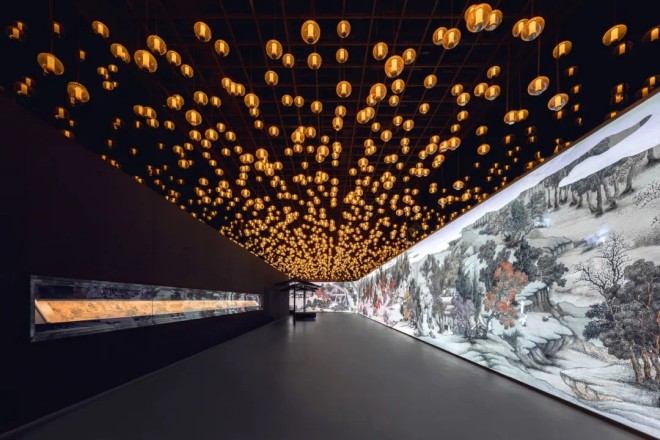
المتاحف are undergoing a transformation led by technology. With the development of technology, museums are not only exhibiting cultural relics, but more and more museums have begun to “revive” cultural relics. So how to revive cultural relics so that visitors can understand them immersively?
This requires the help of giant LED display. The Jinlingtu Digital Art Exhibition of Nanjing Deji Art Museum is the bright wave in this wave of change, setting an innovative benchmark for the global museum community.
1. Application of giant LED display in museums
As a perfect combination of modern technology and traditional culture, giant LED displays are increasingly used in museums.
مع ارتفاعها سطوع، عالي دقة, and high contrast, this type of display can present clear and delicate images, bringing shocking visual effects to the audience. In public places such as museums, giant LED displays can not only enhance the viewing experience of the exhibition but also enhance the audience’s sense of participation and interactivity.
ميزات تقنية
1). Real-time rendering technology
Real-time rendering technology is a highlight of giant LED displays in museum applications. By using advanced graphics rendering engines such as Unity, museums can achieve a smooth display of dynamic images.
These dynamic images can include the reproduction of historical events, the demonstration of the restoration process of cultural relics, virtual guided tours, etc., providing visitors with a richer and more diverse exhibition experience.
2). 3D modeling technology
3D modeling technology enables museums to perform high-precision three-dimensional modeling of exhibits and their environment.
This technology not only allows viewers to see the three-dimensional image of the exhibits on the screen but also allows them to understand the detailed characteristics of the exhibits in all directions through operations such as rotation and scaling.
In addition, 3D modeling technology can also be combined with virtual reality (VR) technology to provide viewers with an immersive exhibition experience.
3). Positioning and tracking technology
The application of positioning and tracking technology in museums cannot be ignored. Through technical means such as military-grade positioning systems, museums can accurately record the location and exhibition paths of visitors.
These data not only help museums understand the viewing habits and needs of visitors but also provide strong support for subsequent exhibition planning and optimization.
At the same time, positioning and tracking technology can also be combined with interactive devices to achieve real-time interaction between visitors and exhibition content.
In summary, the application of giant LED display screens in museums not only improves the visual effects and interactivity of exhibitions but also provides strong support for the digital transformation and intelligent upgrading of museums.
2. Immersive experience of LED display screen in the Jinling Map digital art exhibition
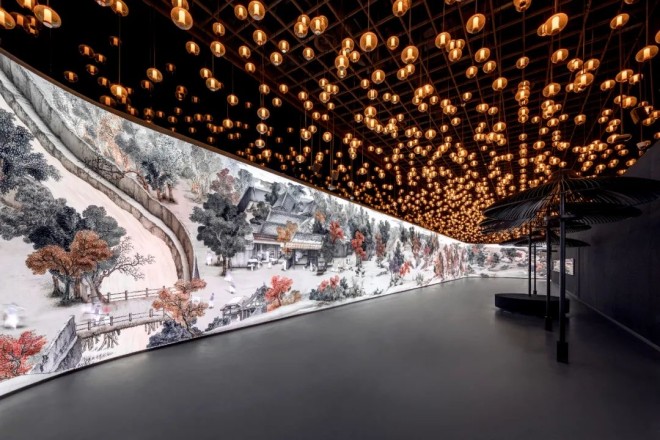
1). معرض background and purpose
The Jinling Map digital art exhibition is rooted in the masterpiece “Jinling Map” by the Qing Dynasty painter Feng Ning.
It aims to use the power of modern technology to bring the audience into the city of Nanjing a thousand years ago and experience the cultural essence and lifestyle of the Song Dynasty.
The core of the exhibition is to give this historical scroll a new life through the innovative application of digital technology and become a cultural bridge connecting the past and the present.
1). Immersive construction of LED display screen
- Circular giant screen: A modern interpretation of historical scrolls
One of the core highlights of the exhibition is the 110-meter-long and 3.6-meter-high circular giant LED screen. It not only magnifies “Jinling Map” a hundred times but also wraps the audience in the scene of Jinling a thousand years ago with its surrounding visual design.
On the giant screen, every stroke is vivid and delicate, as if history is slowly unfolding before your eyes, allowing the audience to instantly travel through time and space and experience that glorious history.
- Interactive exhibition: Deep integration of technology and art
The innovation of the Jinlingtu digital art exhibition lies in its interactive mode of “characters in the painting, real-time follow.”
With the help of advanced digital activation technology, the audience’s figure can be projected onto the screen in real-time, walking side by side with the Song Dynasty characters and even participating in the scenes in the painting, experiencing a dialogue across time and space.
This unprecedented interactive experience not only deepens the audience’s understanding of Song Dynasty culture but also makes the exhibition itself a unique cultural adventure.
2). Immersion enhancement of auxiliary technology
- Motion capture: Accurate interaction, immersive
The use of motion capture technology allows every subtle movement of the audience to be accurately captured and fed back to the screen in real-time.
The introduction of this technology not only improves the smoothness and realism of the interaction but also allows the audience to feel that they have become part of the exhibition during the participation process and have an unprecedented connection with the artwork.
- Next-generation 3D sound effects: An immersive journey of hearing
In order to create a full range of immersive experiences, the Jinlingtu digital art exhibition also uses next-generation 3D sound effects technology. This technology uses precise sound positioning and simulation to make the audience feel as if they are in the real Song Dynasty market.
Whether it is the hustle and bustle of the street or the tranquility of the alley, they can be clearly perceived by the ears, further enhancing the immersion and realism of the exhibition.
The Jinlingtu Digital Art Exhibition successfully created an unprecedented immersive cultural experience through the innovative application of LED display screens and the ingenious integration of auxiliary technologies such as motion capture and three-dimensional sound effects.
This exhibition is not only an in-depth exploration of Song Dynasty culture but also a model of the perfect combination of modern technology and traditional art, leading to the new trend of museum exhibitions.
3. What is the strategy of giant LED display screens to create immersive museums?
Giant LED display screens play a vital role in creating immersive museums. The following are specific strategies for creating immersive museums through giant LED display screens:
1). Scene design
- Diversified display space
Using giant LED display screens to design circular, five-sided, 360-degree surround and other display spaces, these designs can enhance the audience’s sense of immersion, making them feel as if they are in a brand new virtual world built by LED screens.
Combined with projection technology, attract the audience through light and shadow effects. Projection technology can complement LED display screens to create more realistic and vivid scene effects.
- Flexible layout and creative design
According to the theme and display content of the exhibition, choose the appropriate type and layout of LED display screens.
For example, for exhibits that require a high-definition display, you can choose a small-pitch LED display screen with a higher pixel density; for environmental effects that require large-area projection, you can choose an LED display screen with a large screen size.
In the design process, pay attention to the integration of creative elements. Unique shapes, color matching, and light and shadow effects create an atmosphere that matches the theme of the exhibition so that the audience can get an immersive experience both visually and mentally.
2). تجربة تفاعلية
- Design interactive methods
Through gesture recognition, mobile body sensing, and other technologies, design the interaction method between the audience and the screen content.
The audience can operate the projection effect by touching the screen, waving their arms, or moving their bodies, and interacting with the virtual world on the screen in real-time.
Use sensor technology to enable people walking by to interact with the screen content. For example, when the audience walks through a certain area, the virtual characters or scenes on the screen will respond accordingly, enhancing the audience’s sense of participation and immersion.
- Enhance interactive experience
Incorporate fun and challenging elements into the interactive experience, such as setting game levels, solving puzzles, etc., to stimulate the audience’s curiosity and desire to explore.
Through interactive experience, the audience has a deeper understanding of the historical and cultural connotations behind the exhibits and enhances the educational significance and cultural value of the exhibition.
3). Content production
- 3D modeling and multi-angle display
3D modeling of exhibits to achieve multi-angle and all-round display. Through 3D modeling technology, the audience can see the three-dimensional image of the exhibits on the screen, and through operations such as rotation and zooming, they can fully understand the detailed characteristics of the exhibits.
Using the high resolution and high brightness characteristics of the giant LED display, a delicate and realistic 3D effect is presented, making the audience feel as if they are in the exhibits.
- High-quality dynamic content
Produce high-quality dynamic content, such as flowing rivers, busy streets, and other scene effects. These dynamic contents can not only create an immersive atmosphere but also enhance the audience’s sense of substitution and immersion.
Incorporate historical elements and cultural symbols into dynamic content so that the audience can feel the weight of history and the charm of culture while enjoying the beautiful scenery.
4. Other cases of giant LED screens in museums
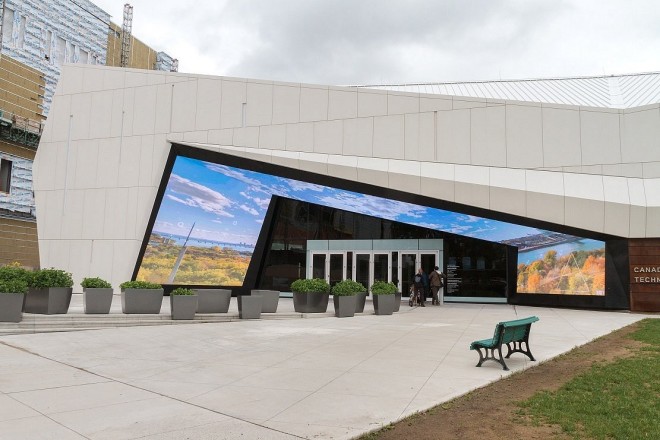
1). Canadian Science and Technology Museum
The Canadian Science and Technology Museum, located in Ottawa, has a history of more than 50 years, and its appearance is full of technology.
In the museum, LED screens are widely used in various display scenes, providing audiences with a rich and colorful technological experience.
These screens not only show the achievements of Canada’s scientific and technological development but also let the audience feel the charm of technology in the interaction.
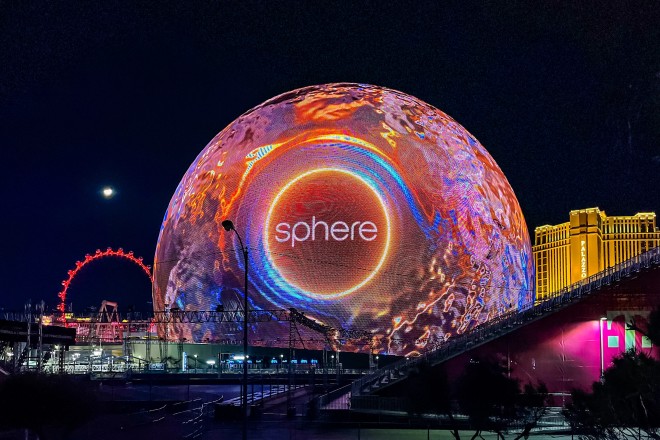
2). MSG Sphere in Las Vegas
This is a spherical LED screen known as a “full screen” building. It is also the largest spherical building and the largest LED screen in the world. MSG Sphere is 157 meters in diameter and 111 meters high. It has 17,600 seats inside.
It took 6 years to build and cost 2.3 billion US dollars. The LED screen inside covers an area of 15,793 square meters, with a resolution of 16K, and the display area is more than 40 times that of IMAX. In addition, there are 164,000 speakers surrounding the entire building, providing audiences with an unprecedented audio-visual feast.
The goal of MSG Sphere is to provide audiences with a VR experience without glasses so that they can enjoy the entire performance in terms of touch, hearing, smell, etc.
3). Discussion of successful experiences
- الابتكار التكنولوجي
No matter which case, it reflects the importance of technological innovation in museum display. By introducing cutting-edge technologies such as LED display, 5G+8K technology, VR, etc., museums can provide audiences with a more vivid and realistic immersive experience.
- Rich content
When museums use LED display screens for display, they pay attention to the richness and diversity of content. By displaying different themes and scenes, the audience can maintain freshness and curiosity during the viewing process.
- Strong interactivity
These cases all emphasize the importance of interactivity in museum display. By designing various interactive links and experience projects, the audience can actively participate in it, interact and communicate with the exhibits, thereby enhancing the audience’s sense of participation and immersion.
- Focus on experience
When museums use LED display screens for display, they pay attention to the audience’s experience. By optimizing the screen layout and adjusting the light and sound effects and other details, the audience can enjoy an immersive experience in a comfortable environment.
5. Challenges and future prospects of giant LED display screens in museums
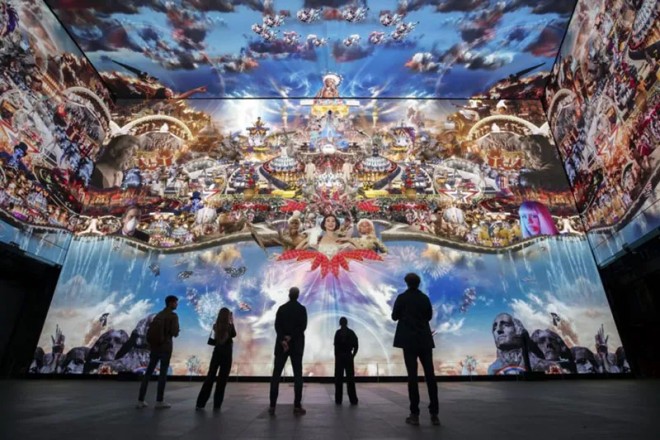
1). Technical Challenges
- High Costs
The initial investment cost of giant LED screens is quite high, including the cost of equipment purchase, installation and commissioning, and subsequent technical support. This may be a considerable burden for many museums.
In addition, with the continuous upgrading and replacement of technology, the maintenance cost of giant LED screens is also increasing.
- Technical Complexity
Giant LED screens have high technical complexity and require professional technicians for installation and maintenance. This requires museums to invest more resources in talent team building.
At the same time, due to the huge size of the display, its heat dissipation, energy consumption and other issues also need special attention.
- Maintenance Difficulty
Giant LED screens are difficult to maintain, especially when failures occur, and need to respond quickly and repair. This requires museums to have a complete maintenance system and emergency plan.
In addition, since the display screen is exposed to the air for a long time, it is easily affected by environmental factors such as dust and moisture, so it needs to be cleaned and maintained regularly.
2). Content Innovation
In order to continue to attract audiences to visit repeatedly, museums need to focus on content innovation and diversity when using giant LED screens for display. Specifically, we can start from the following aspects:
- Update the display content regularly
Museums can regularly update the display content, including new exhibition themes, interactive experience projects, etc. so that the audience can have new discoveries and experiences every time they visit.
- Introduce diversified display forms
In addition to traditional pictures, texts, and video displays, museums can also introduce new technologies such as AR and VR to provide audiences with a more vivid and realistic immersive experience.
- Enhance interactivity
By designing various interactive links and experience projects, the audience can actively participate in them, interact, and communicate with the exhibits, thereby enhancing the audience’s sense of participation and immersion.
- Combining with current hotspots
Museums can combine current hotspots and major events to plan related exhibitions and display activities to attract the attention and participation of the audience.
خاتمة
The success of the Jinling Map Digital Art Exhibition not only allows historical relics to be reborn under the wings of technology but also allows the audience to experience unprecedented cultural immersion in the symphony of light and shadow.
Looking to the future, giant LED display screens will shine in more museums, not only giving exhibits fresh vitality but also leading the audience into a new era of museum journeys where technology and humanities are intertwined.
أخيرًا، إذا كنت تريد معرفة المزيد عن شاشات LED، يرجى الحصول على اتصال معنا.
